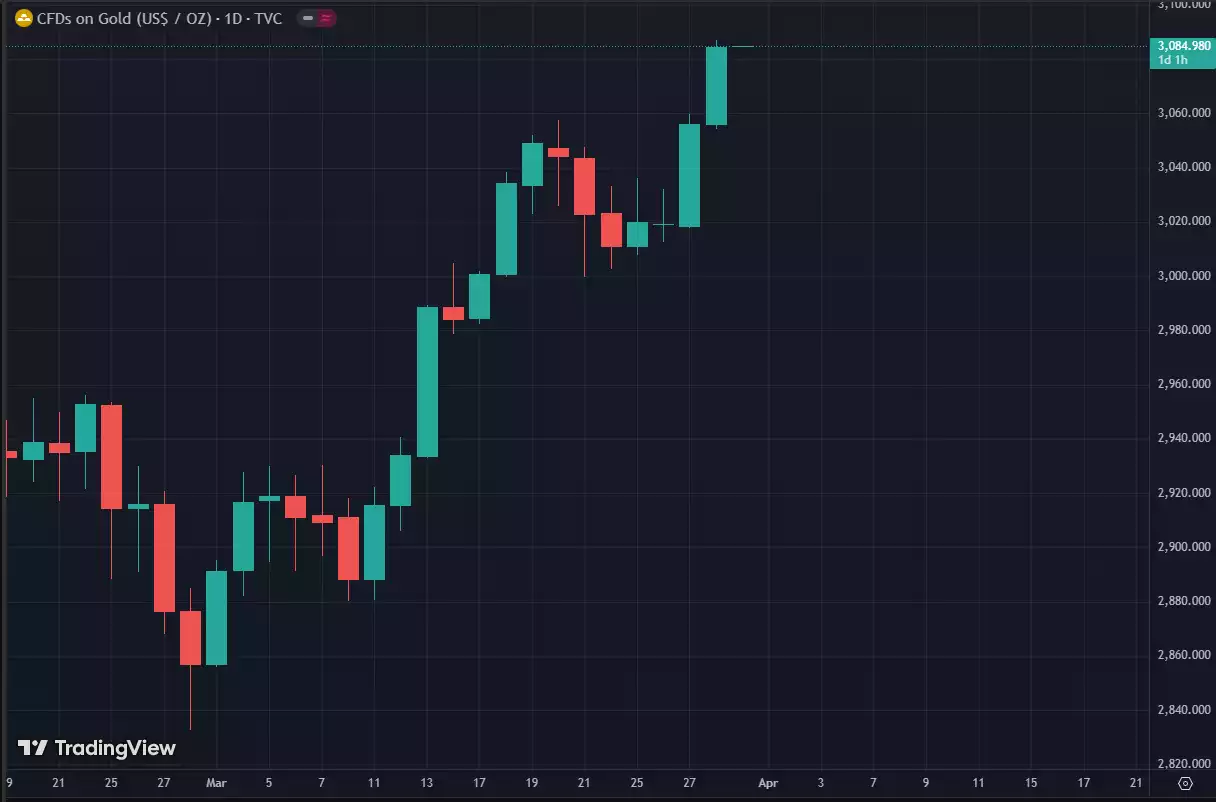Stock Bloodbath Launches Gold
News
|
Posted 31/03/2025
|
2309
Stocks experienced a large selloff to close out the week, with major US market averages closing in the red as investors grew increasingly concerned about the threat of stagflation: Slow growth with high inflation. Throughout the trading session, concerns were once again raised about how robust the economic recovery is, ongoing supply-chain problems, and the risk of consumers reducing spending if prices remain elevated.
Market analysts provided a variety of reasons for the slump. One of the key concerns was ongoing inflationary pressure. Central bankers and policymakers have been questioning whether they need to maintain or even increase interest rates longer than originally anticipated. The Federal Reserve's stance suggests that it remains worried about keeping inflation (caused by their increase of the money supply) at bay, which means that investors have grounds to worry that higher borrowing rates will squeeze companies as well as families.
Investors closely looked for demand signals from consumers, paying attention to signs that people might be more risk-averse in consumption if incomes fail to keep pace with rising costs of living. Throughout the week of trading, companies in sectors exposed to consumer behaviour (retail, technology, and transportation) saw their share prices shrink as investors gauged the likelihood of diminished consumption. Meanwhile, certain segments of the market were briefly fuelled by rumours that certain commodities would benefit from limiting supply levels. But these hot spots of hope were not strong enough to balance the overall tone of caution.
Economists further observed that geopolitical tensions remain a cause of market uncertainty. Ongoing problems such as interruptions in international supply chains and energy price volatility remain to drag on the corporate profit prospect. Many institutions are at present dealing with rising input costs, and while some have succeeded in pushing them on consumers, others are being forced to absorb them to avoid losing market share.
As the market recorded its weekly loss, some analysts pointed to the risk of stagflation where inflation is high but economic growth is stagnant. If consumer spending and corporate profits slow down at the same time, companies can reduce their expansion plans. This would reduce hiring and capital expenditures, which in turn carries the risk of prolonging the period of contained economic growth.
Soon, traders and portfolio managers expect to gear up for potentially rough market sessions until there is compelling evidence of the moderation of inflation or improvement in consumer demand. Over the coming weeks, there will be a series of high-stakes economic reports that will decide the near future. They include consumer confidence surveys and inflation data releases that can provide clues on whether price pressures are moderating or continuing. Federal Reserve officials will also have to comment on their perception of inflation, job markets, and broader economic conditions. Any signal that the central bank would shift policy direction might reverse sudden stock-price actions.
Certain strategists believe that the market could stabilise if there are positive signals about the direction of inflation. For instance, robust global supply chains, stable prices for oil, or de-escalation of tensions that have derailed trade will relieve pressure on prices. Any reversal or new challenge, such as a commodity price spike or resumed imbalances in supply, may restore stagflation fears.
Investors seeking a safe haven have flooded into gold. Before the week's close, the gold price rocketed to US$3086 per troy ounce. A large amount of risk assets are being funnelled into a very small basket of hedges, and good appears to be the major winner as it continuously breaks new all-time highs.

The question of whether the economy is on the verge of a stagflationary environment has returned, and the economic data and corporate profit announcements of the next few weeks will provide insightful answers as to how policymakers, firms, and consumers adapt to a world of diminishing growth and higher prices.